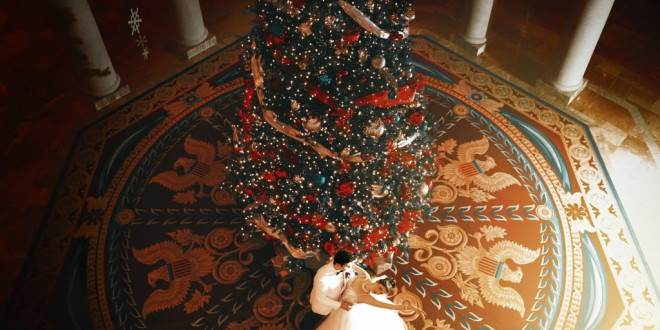[ad_1]
Are you here because you want to know exactly how to achieve that timeless, tasteful feel that (let’s face it) all royal weddings seem to present so effortlessly? No worries- it’s not as hard as it may seem. Let’s take a short trip back in history to review some of the most iconic wedding trends that have stood the test of time.
I’ll start with Queen Victoria’s wedding, which dates back to 1840. Hey, traditions have to start somewhere, right?
Long before and long after Queen Victoria and Prince Albert took the vow of marriage, there have certainly been some eminent weddings, including colorful attire, but the one wedding day tradition that has remained the most constant has been the white wedding- and we have Queen Victoria herself to thank for that.
Victoria was a true wedding trendsetter; from her wedding day apparel to her fleet of twelve bridesmaids. Her dress was made up of pure white satin, but the wow factor came in on the hem. Victoria’s train was trimmed with four yards of Honiton lace that measured almost a full yard in depth. Historically, Honiton lace is one of the more intricate styles of lace. It consists of numerous natural motifs such as flowers and leaves, all sewn together into the net ground of the piece.
Victoria’s dress: A heavy, white satin gown trimmed with ornate, Honiton lace
Your dress: When looking for white satin and lace wedding gowns, your options are almost unlimited. To achieve a royalty-inspired gown, consider looking at the David Tutera for Mon Cheri line.
David Tutera has been working closely with Mon Cheri designer Martin Thornburg to develop a collection of wedding dresses that feature those key traditional elements that Victoria (and many others) donned. Most of them have elegant lace detailing that would surely uphold a royal standard.
Up next is the Wedding of the Century- the day Diana Spencer married Prince Charles and became Diana, Princess of Wales was presumably one of the largest royal spectacles of all time. It’s been said that on that day in 1981, nearly 750 million viewers tuned in for the event. The princess’s trailing bouquet of flowers was but one of the most sought after splendors. Princess Diana’s wedding was so influential that many brides thereafter longed to have a fairy tale wedding like hers. This is a trend that has remained strong in the world of weddings.
Diana’s flowers: A cascading bouquet of gardenias, myrtle, ivy, lily of the valley, freesias, yellow roses, and more.
Your flowers: Stick with the iconic waterfall of white flowers and ivy or trade it in for a more compact bouquet; but in order to channel your inner Diana, choose the right flowers and bouquet accessories for a high-end, timeless look.
A good way to achieve this is to select an easy-to-hold and fashionable bouquet holder for you or your florist to build upon.
The final stop on our royal wedding tour is at Westminster Abbey in London, the place where the beautiful Kate Middleton married Prince William in 2011. This wedding was the perfect combination of traditional and modern, exciting and refined. Kate’s gown, designed by Sarah Burton at Alexander McQueen (that’s a resume-builder, huh?), was made of satin with a lace overlay. Her bouquet featured none other than lily of the valley, myrtle, and hyacinth, to name a few. Possibly a nod to our late royalties Victoria and Diana?
Kate’s look: A tailored satin and lace long-sleeved gown with a cathedral length train and a compact bouquet of white flowers, including Sweet William, lily of the valley, and more.
Your look: Capture the graceful aura of our royal beauties with hints of lace, a train, and white flowers with pops of greenery.
[ad_2]
Source by Kristin Dvorak

